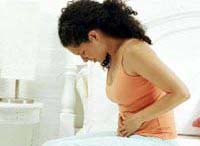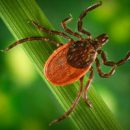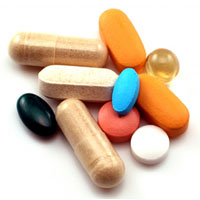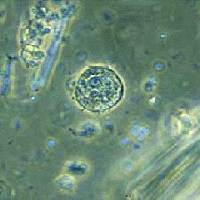Parathines A and B are diseases that are very similar to the abdominal typhoid on their manifestations, but are caused by other microorganisms. In something they are similar, they differ in something. Read more about manifestations of paratyphs and their treatment in the article.
Content
Pararaticals A and B are acute infectious diseases that are similar in their manifestations with abdominal typhoid. The pathogens are movable bacteria from the genus Salmonella, resistant in an external environment, disinfectants in conventional concentrations kill them in a few minutes. The only source of infection with paratifa is the sick people and carriers of bacteria, which only distinguish them, but they themselves do not get sick, and with paratify, they can be an animal (cattle and dr.). Bacteria fall into the body with soil particles on poorly washed vegetables and fruits, on hand and t.NS. In addition, particles can be transferred with small rodents, such as mice. Lifting the incidence begins with July, reaching a maximum in September-October. Human sensitivity to bacteria is very high and does not depend on age and gender.
General signs of parathy and in
Parathines A and B, as a rule, begin gradually from the increase in signs of infectious disease: an increase in temperature, increasing weakness. Then join signs of intestinal lesion: nausea, vomiting, liquid chair. At the same time, cough can appear, runny nose, rash, like in the abdominal typhoid.
The disease usually begins more acutely than Parathif B, the incubation period (time from the moment of bacteria from entering the body to the development of signs of the disease) from 1 to 3 weeks. Accompanied by nausea, vomiting, liquid chair, as well as coughing and runny nose, possibly redness of the face, the exacerbation of herpes. Rash, as a rule, appears on 4-7 days of illness, often abundant. During the disease, there are several waves of the appearance of rash. Temperature raised. Under paratifa, a great possibility of repeated occurrence of the disease than with paratifiness in and abdominal title.
The incubation period is significantly shorter than under paratifa. Signs are distinguished by a great variety. When transferring infection through water, there is a gradual beginning of the disease, relatively easier its current. When bacteria penetrate together with food, gastrointestinal phenomena (nausea, vomiting, liquid chair) prevail with subsequent development and distribution of the process to other organs.
Under paratifiness in more often than with paratifa a and abdominal title, there are lungs and medium-wing forms of the disease. Repeated development of the disease is possible, but meets less. The rash may be absent or, on the contrary, be abundant, diverse, emerge early (4-7 days of illness).
Treatment and prevention of paratyphs A and in
 Treatment of paratyphs A and B should be complex, including care, diet, antibiotics, and if necessary, drugs that increase immunity. Bed regime up to 6-7 days of normal temperature, from 7-8 days is allowed to sit, and from 10-11 walk. Food should be easily digestible, gentle stomach and intestines. During the fever period, it is prepared for a couple or give in a crust.
Treatment of paratyphs A and B should be complex, including care, diet, antibiotics, and if necessary, drugs that increase immunity. Bed regime up to 6-7 days of normal temperature, from 7-8 days is allowed to sit, and from 10-11 walk. Food should be easily digestible, gentle stomach and intestines. During the fever period, it is prepared for a couple or give in a crust.
Among antibiotics, leading place is occupied by Levomycetin, which is used to 10 days of normal temperature. To increase the effectiveness of antibiotics, mainly to prevent relapses, combine them with funds stimulating the protective forces of the body.
Prevention of paratyphs A and B reduces to the general measures: improving the quality of water supply, sanitary cleaning of populated areas and sewage, fighting flies, etc. All overwhelmed observed by the doctor for 3 months from the date of recovery.









